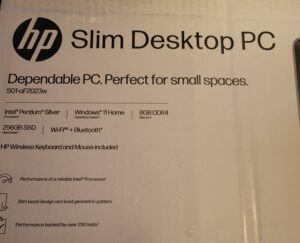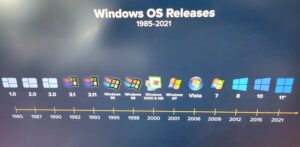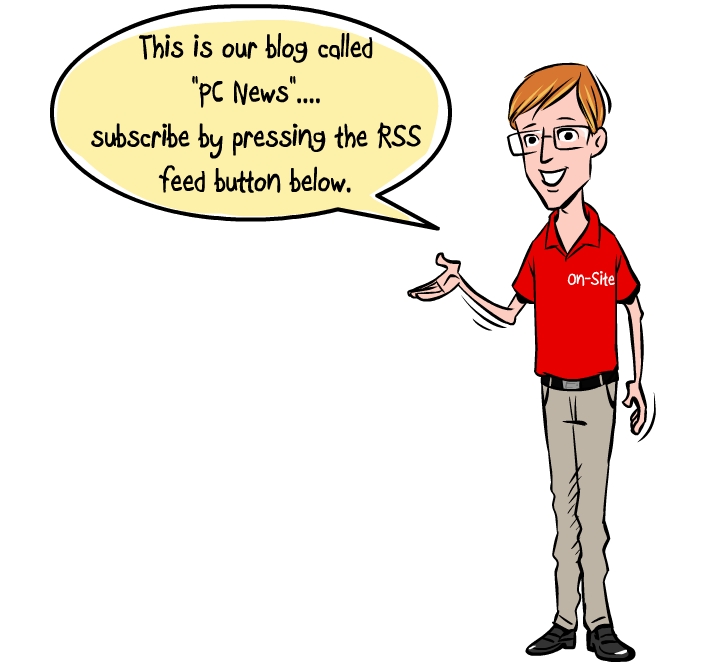 In today’s digital age, where our lives are intertwined with technology, encountering PC issues is not uncommon. Whether it’s a slow computer, a tech support scam, hardware malfunction, software glitches, or something else – dealing with these problems can be frustrating. One of the burning questions many users have is: How long does it take to repair a PC? Let’s delve into this topic to understand the variables that influence repair times and what you can expect during the process.
In today’s digital age, where our lives are intertwined with technology, encountering PC issues is not uncommon. Whether it’s a slow computer, a tech support scam, hardware malfunction, software glitches, or something else – dealing with these problems can be frustrating. One of the burning questions many users have is: How long does it take to repair a PC? Let’s delve into this topic to understand the variables that influence repair times and what you can expect during the process.
Issue Complexity: The complexity of the problem plays a significant role in determining repair time. Minor issues like software conflicts or driver updates can often be resolved relatively quickly – if you find a fast computer repair company – usually within a few hours. However, more complex issues such as hardware failures or severe virus infections may require several days to diagnose and fix.
Diagnosis Phase: The initial phase of PC repair involves diagnosing the problem accurately. This step is crucial as an incorrect diagnosis can lead to ineffective solutions and wasted time. I always tell people that diagnostics might be the most important part of a repair. Depending on the issue’s nature, the diagnostic phase can take anywhere from a few minutes to several hours. Not all techs are created equal.
Repair Techniques: The methods used to repair your PC also impact the time frame. For software-related issues, technicians may employ tools to scan for malware, repair corrupted files, or reinstall operating systems. These tasks can be completed in minutes or be completed within a day or two depending on a variety of factors. On the other hand, hardware repairs such as replacing a faulty hard drive or upgrading components may take longer, especially if parts need to be ordered.
Availability of Resources: Availability of resources such as spare parts, software licenses, and skilled technicians can affect repair times. If a specific component needs to be replaced and it’s readily available, the repair process can be expedited. However, sourcing rare or specialized parts may cause delays.
Service Provider: The expertise and efficiency of the service provider also play a vital role. Reputable computer repair centers with experienced technicians often have streamlined processes that result in faster turnaround times. Conversely, choosing an inexperienced or unreliable service provider may lead to extended repair durations.
Communication and Updates: Transparent communication between you and the repair service is essential. A reliable service provider will keep you informed about the progress of your PC repair, any unexpected challenges encountered, and an estimated completion time. Regular updates can help manage expectations and reduce anxiety about repair delays.
Preventive Measures: In some cases, preventive measures may be recommended during the repair process to avoid future issues. This could include installing security software, updating drivers regularly, or implementing hardware upgrades. While these steps may add extra time to the repair process, they can enhance your PC’s overall performance and longevity.
Customer Cooperation: Your cooperation and responsiveness also contribute to timely repairs. Providing accurate information about the issue, promptly approving repair recommendations, and following any post-repair instructions can help expedite the process.
In conclusion, the time required to repair your PC can vary significantly based on factors such as the complexity of the issue, diagnosis accuracy, repair techniques, availability of resources, service provider efficiency, communication, preventive measures, and customer cooperation. While some repairs may be completed within hours, others could take several days or longer. Choosing a reputable and experienced repair service, staying informed, and actively participating in the repair process can help minimize downtime and ensure a successful outcome for your PC.
To Fix or to Ditch? The Ultimate Guide to Repairing vs. Replacing Your PC
 The blue screen of death. The grinding fan. The agonizingly slow startup. These are all signs your once-proud PC might be on its last legs. But before you toss it and shell out for a shiny new machine, consider this: repair versus replace.
The blue screen of death. The grinding fan. The agonizingly slow startup. These are all signs your once-proud PC might be on its last legs. But before you toss it and shell out for a shiny new machine, consider this: repair versus replace.
The answer like that perfect meme, depends. Here’s a breakdown of the factors to consider when deciding on your PC’s fate:
The Age Game: Generally, younger PCs are better repair candidates. For machines under 3 years old, a simple fix like a RAM upgrade or a new hard drive can breathe new life into them. However, for PCs pushing a decade, repairs might become a money pit, constantly playing catch-up with declining performance.
The Dollar Dilemma: Repair costs vary wildly depending on the problem. A quick software fix might be a steal, while a motherboard replacement could cost more than a budget-friendly new PC. Get a diagnosis from a trusted repair shop (or watch some DIY repair tutorials online) to estimate the repair cost.
The Performance Puzzle: Is your slow PC a constant source of frustration? Upgrading key components like RAM or the SSD or HDD or the graphics card can offer a significant performance boost. However, if your needs have drastically changed (think: casual browsing vs. high-end video editing), a new, used or refurbished PC with more powerful hardware might be a wiser investment.
The Eco-Ethical Edge: Don’t underestimate the environmental impact. Repairing your PC extends its lifespan, keeping e-waste out of landfills. If you do choose to replace, consider recycling your old PC or selling it for parts.
The Data Divide: Moving data to a new PC can be a hassle, especially with large files or complex setups. If you’re comfortable transferring data yourself or willing to pay for professional help, this might not be a major concern.
The DIY Dilemma: If you’re tech-savvy and comfortable tinkering, some repairs might be DIY projects. However, for complex issues, a professional’s touch can save you time, frustration, and potentially even further damage.
Ultimately, the decision hinges on your budget, your PC’s age and repairability, and your specific needs. By carefully considering these factors, you can choose the most cost-effective and environmentally responsible path, whether it’s a repair that keeps your old friend chugging along or a fresh start with a brand new PC.
Is it Safe to Take Your Computer to a Repair Shop? A Trustworthy Tech Tune-Up or Privacy Peril?
 The dreaded computer gremlin strikes. Your once-loyal machine sputters, groans, or refuses to budge altogether. Panic sets in, but a beacon of hope appears: the computer repair shop. Yet, a nagging doubt lingers – is it safe to entrust your precious device, brimming with personal information, to a stranger?
The dreaded computer gremlin strikes. Your once-loyal machine sputters, groans, or refuses to budge altogether. Panic sets in, but a beacon of hope appears: the computer repair shop. Yet, a nagging doubt lingers – is it safe to entrust your precious device, brimming with personal information, to a stranger?
The answer, like most things in tech, is nuanced. Repair shops can be lifesavers, but navigating them requires caution. Here’s a breakdown of the risks and how to mitigate them:
The Data Domino Effect: Your computer harbors your documents, photos, and maybe even financial records. Unethical technicians could exploit this access.
Safeguard Strategy: Back up your data religiously. Cloud storage or external hard drives are your friends. If critical information remains, consider removing it before the shop visit (consult a professional for secure deletion methods if needed).
The Parts Prank: Replacing faulty components is a common repair, but some shops might install used or lower-quality parts, inflating your bill or compromising performance.
Transparency is Key: Ask about parts beforehand. Request genuine parts from reputable brands and get a written quote specifying what’s being replaced.
The Phantom Fix: Beware of shops that diagnose unnecessary repairs or inflate problems.
Knowledge is Power: Research common issues for your computer model. Be clear and concise when describing the problem. Don’t be afraid to get a second opinion if the diagnosis sounds fishy.
Finding the Trustworthy Techie: Not all repair shops are created equal.
Reputation Matters: Research online reviews and ask friends for recommendations. Look for shops with certifications from major tech brands.
Ask Questions: Don’t be shy! Inquire about their repair process, data security practices, and warranty policies. A shop comfortable answering your questions is likely a good sign.
By following these steps, you can transform your computer repair shop visit from a gamble into a strategic move. With a little preparation and the right shop, your computer will be back in fighting form, minus the security scare.
The Perfect Storm: Why Crippling Cyberattacks are on the Rise
 Crippling cyberattacks, particularly ransomware assaults, are plaguing businesses and government agencies across industries. From private healthcare providers to critical infrastructure like pipelines, no entity seems immune. This alarming trend isn’t a random surge; it’s a confluence of factors creating a perfect storm for cybercriminals.
Crippling cyberattacks, particularly ransomware assaults, are plaguing businesses and government agencies across industries. From private healthcare providers to critical infrastructure like pipelines, no entity seems immune. This alarming trend isn’t a random surge; it’s a confluence of factors creating a perfect storm for cybercriminals.
1. The Exponential Growth of Valuable Data: Businesses and governments hold a treasure trove of sensitive data – financial records, patient information, intellectual property – and this data is a goldmine for attackers. Ransomware encrypts this data, rendering it inaccessible until a ransom is paid. The more valuable the data, the higher the ransom demanded, leading to crippling financial losses for victims.
2. The Evolving Threat Landscape: Cybercriminals are constantly innovating. Gone are the days of basic phishing emails. Today’s attacks are sophisticated, exploiting vulnerabilities in complex IT systems and leveraging social engineering tactics to bypass even the most well-trained employees.
3. The Remote Work Revolution: The shift to remote work during the pandemic created a larger attack surface for businesses. Employees accessing corporate networks from unsecured home environments introduces new vulnerabilities. Additionally, the increased reliance on cloud-based tools expands the potential entry points for attackers.
4. The Rise of Ransomware-as-a-Service (RaaS): Cybercrime has become an industry, with RaaS platforms offering easy-to-use ransomware tools to anyone with an internet connection. This democratizes cyberattacks, making them accessible to a wider range of criminals, not just highly skilled hackers.
5. The Allure of Easy Money and Low Risk: The success rates for cyberattacks, particularly ransomware, are concerningly high. The potential for significant financial gain, coupled with the relatively low risk of getting caught due to the global and anonymous nature of the internet, makes cybercrime a tempting proposition for malicious actors.
6. The Vulnerability of Outdated Infrastructure: Many businesses and government agencies struggle to keep pace with the ever-evolving cyber threat landscape. They rely on outdated IT systems with known vulnerabilities, making them easy targets for attackers.
7. The Lack of Cybersecurity Awareness: Human error remains a significant factor in cyberattacks. Phishing emails and social engineering tactics continue to be effective because employees may not be adequately trained on cybersecurity best practices.
8. The Digital Divide in Leadership: In an increasingly digital world, a leadership gap exists where those in power may not fully grasp the intricacies of cybersecurity threats. This lack of understanding can hinder proactive measures and make it difficult to allocate appropriate resources to address cyber vulnerabilities.
What Can Be Done?
There’s no silver bullet, but a multi-pronged approach is crucial. Businesses and government agencies need to invest in robust cybersecurity infrastructure, prioritize employee training, and implement strong data backup and recovery plans. Additionally, international cooperation to track down cybercriminals and disrupt their operations is essential.
Bridging the Digital Divide: Encouraging a more digitally literate leadership class is crucial. This can be achieved through targeted training programs, fostering a culture of innovation within government, and potentially even considering age limitations for certain positions.
By acknowledging the reasons behind the rise of cyberattacks, businesses and government agencies can take proactive steps to defend themselves and mitigate the potential for crippling disruptions. The future of cyberspace may be uncertain, but vigilance, a commitment to robust cybersecurity, and a digitally informed leadership are the best weapons we have in this ongoing battle.
Windows Through Time: A Journey Across the Panes of Microsoft’s Evolution
 One of my interview questions is always: “name all the Windows operating systems since XP.” And overall, I’m a fan of Microsoft and Bill Gates and the late Paul Allen. In the vast landscape of digital innovation, Microsoft Windows stands as a towering giant, shaping the way we have interacted with computers since Gates purchased 86-DOS for $50,000. From humble beginnings to a ubiquitous presence in homes and offices worldwide, the history of MS Windows is a fascinating tale of technological advancement and digital design.
One of my interview questions is always: “name all the Windows operating systems since XP.” And overall, I’m a fan of Microsoft and Bill Gates and the late Paul Allen. In the vast landscape of digital innovation, Microsoft Windows stands as a towering giant, shaping the way we have interacted with computers since Gates purchased 86-DOS for $50,000. From humble beginnings to a ubiquitous presence in homes and offices worldwide, the history of MS Windows is a fascinating tale of technological advancement and digital design.
Genesis of Windows:
The Windows saga technically began in 1981 with 86-DOS and then went into widespread adoption in 1985 with the advent of Windows 1.0, a graphical extension for MS-DOS. Though not an instant hit, it laid the groundwork for a revolutionary approach to computing. The introduction of a graphical user interface (GUI) marked a departure from the command-line interfaces of the past, making computing more accessible to a broader audience.
Windows 95: The Game-Changer:
Windows 95, often hailed as a milestone in Microsoft’s journey, hit the shelves in, unsurprisingly, 1995. This release introduced the iconic Start menu, taskbar, and a simplified user interface, making it a user-friendly environment for millions. The graphical overhaul set a new standard for personal computing, and the CD-ROM distribution brought it to the masses.
The Millennium Misstep:
Windows ME (Millennium Edition) followed in 2000, attempting to bridge the gap between the 9x series and the NT-based systems. However, plagued by stability issues, it failed to capture the success of its predecessors. Despite its shortcomings, Windows ME laid the groundwork for future innovations in multimedia and system restoration features.
XP: The Long-Lasting Legacy:
Windows XP, released in 2001, became a symbol of stability and user-friendliness. Its longevity was unprecedented, with support lasting until 2014. XP not only refined the Windows experience but also introduced features like System Restore and a fresh visual style. Its enduring popularity makes it one of the most beloved Windows versions.
Vista and 7: Peaks and Valleys:
Windows Vista, launched in 2007, faced criticism for its performance issues and hardware demands. However, it laid the foundation for Windows 7, released in 2009, which redeemed Microsoft’s reputation. Windows 7 refined the Vista experience, offering improved performance, a streamlined taskbar, and enhanced security features.
Windows 8: A Touch of Controversy:
Windows 8, released in 2012, aimed to bridge the gap between traditional PCs and touchscreen devices. Its radical departure from the familiar Start menu stirred controversy, but it marked a significant step toward a unified experience across various device types. The subsequent Windows 8.1 addressed user concerns, bringing back the Start button.
Windows 10: A Unified Ecosystem:
Launched in 2015, Windows 10 emerged as a synthesis of the best elements from previous versions. It introduced a seamless ecosystem, with a universal app platform and a return to the familiar Start menu. Windows 10 also embraced a continuous update model, ensuring users had access to the latest features and security enhancements.
The Future of Windows:
As technology continues to evolve, Microsoft remains committed to the Windows platform. With innovations like Windows 11 and beyond, the focus is on enhancing user experiences, optimizing performance, and adapting to the changing landscape of computing.
Conclusion:
The history of MS Windows is a captivating narrative of innovation, adaptation, and user-centric design. From the early days of Windows 1.0 to the latest iterations, Microsoft’s flagship operating system has played a pivotal role in shaping the digital era. As we peer into the future, the Windows story is far from over, promising continued evolution and groundbreaking developments.


